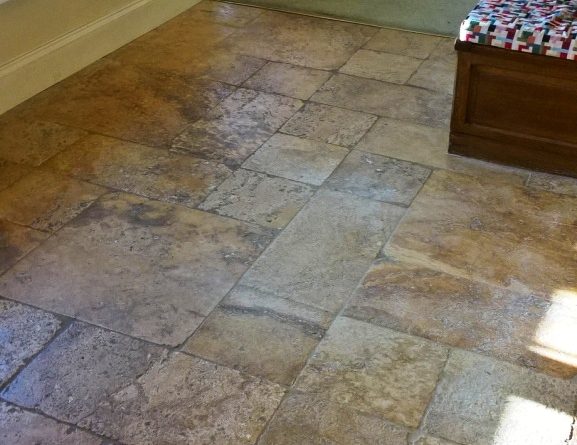Deep Cleaning a Travertine Kitchen Floor in the Cotswolds
Details below of an unusual Travertine tiled kitchen floor in Greet, Gloucestershire where we were asked to restore the appearance of the tiles and leave a natural as opposed to shiny finish. Greet is a lovely little village at the edge of the Cotsworlds and famous for being a short walk to Winchcombe station on the Gloucestershire Warwickshire Railway which is run by volunteers and often has steam trains running on its line.
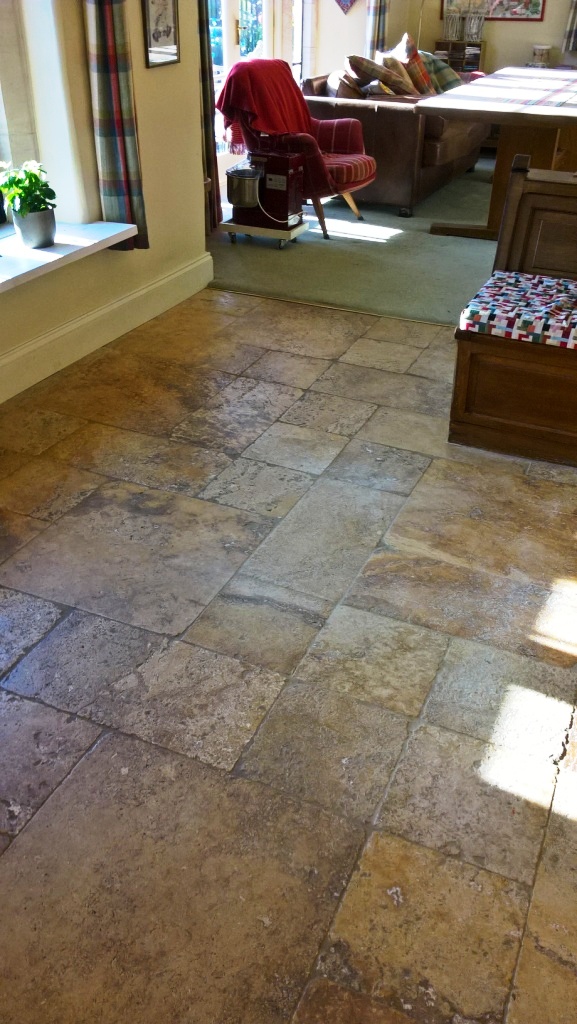 |
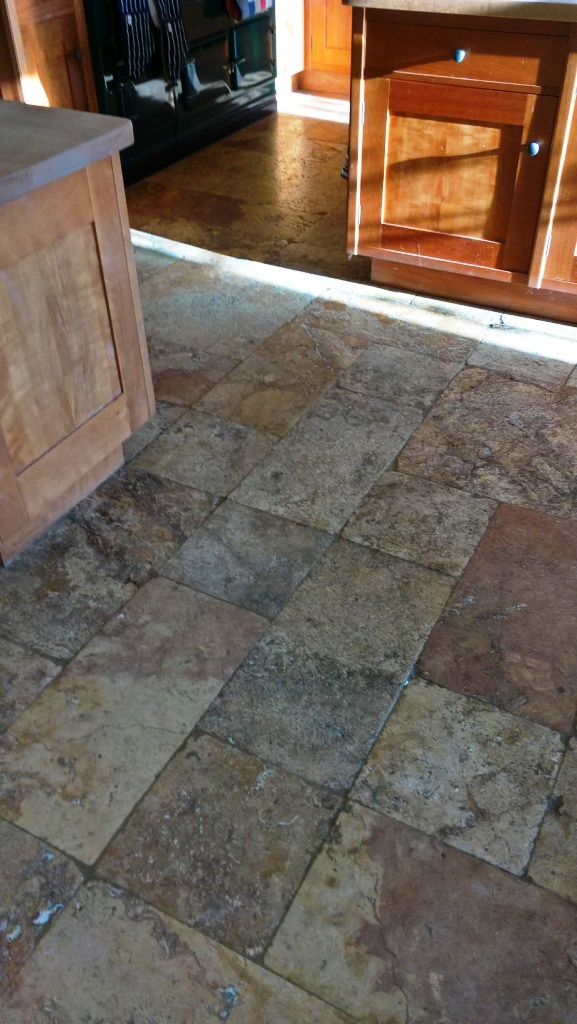 |
Burnishing a Travertine Tiled Floor
Travertine responds well to burnishing which is an abrasive cleaning method as opposed to chemical. Basically, it involves the application of several different grades of diamond encrusted pad to the stone lubricated with a small amount of water. You run the pad over each tile and then give the floor a quick rinse before moving on to the next pad, I started with the first of the four burnishing pads which is a coarse 400 grit pad that designed to grind away the dirt and old sealer on the surface of the floor.
After applying the first pad, I moved my way through the medium 800 and fine 1500 grit pads to gradually restore the appearance of the Travertine. Normally I would of also applied the fourth pad in the series but if you recall the customer did not wanted a polished appearance so I stopped after the 1500 grit pad.
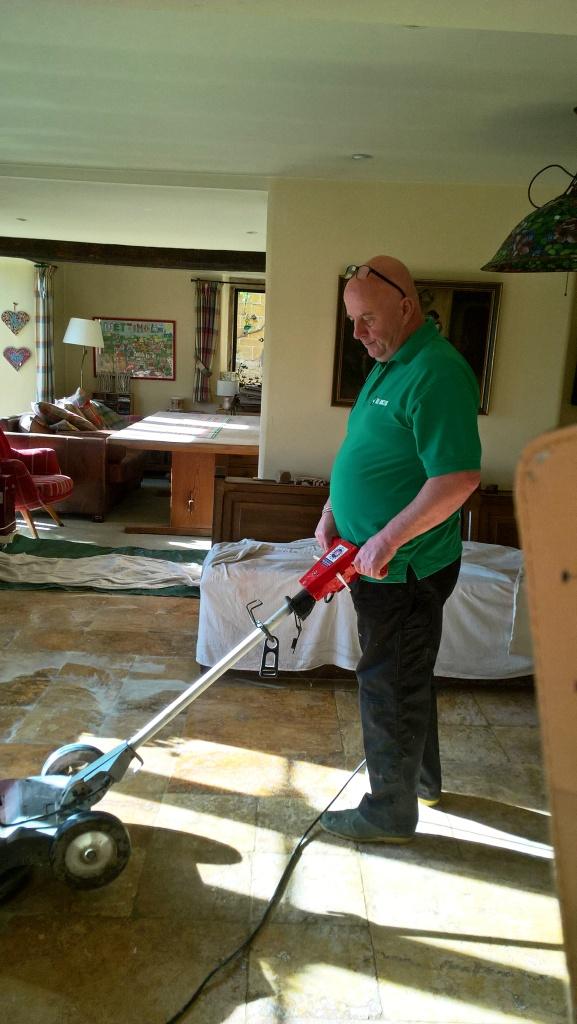
The pads work well on tile but struggle to reach recessed grout so to clean that I applied a medium dilution of Tile Doctor Pro-Clean and scrubbed it into the grout lines manually using a stiff grout brush. Once I was happy with the appearance of the grout the soiled cleaning solution was rinsed away with water and extracted using a wet vacuum leaving the floor to dry off overnight.
Sealing a Travertine Tiled Floor
The next day I returned to finish the floor and first task was to run a Tan buffing pad over the floor to ensure the floor was clean and any residue from the diamond pad burnishing had been removed.

Once I was happy with the tiles I proceeded to apply two coats of Tile Doctor Colour Grow which is an impregnating sealer that protects from within by occupying the pores in the stone so dirt can penetrate and lifts the natural colours in the stone in the process.
I should mention that normally only one coat of Colour Grow is usually required to seal Travertine however on this occasion the stone was quite porous.
 |
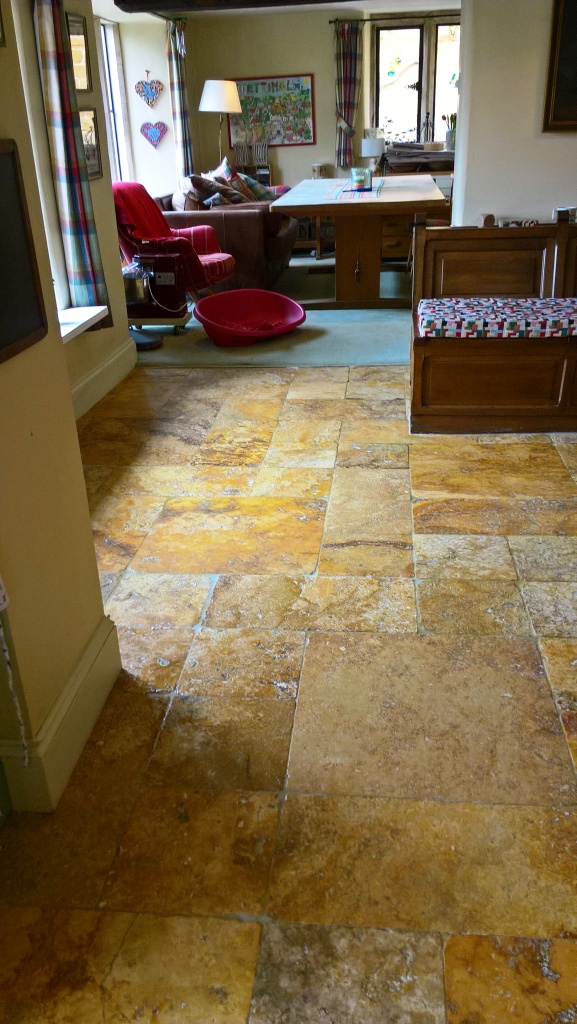 |
The colours in the Travertine were so much more vibrant after the job was completed and the customer was happy with the result, although personally I would have preferred to have applied the fourth pad to build up the shine however I delivered what the customer had asked for so I was happy with that.
Source: Travertine Tile Cleaning and Restoration in Gloucestershire
